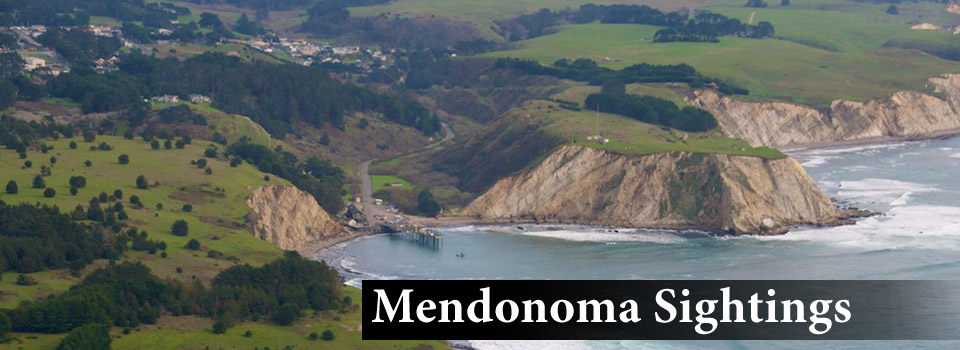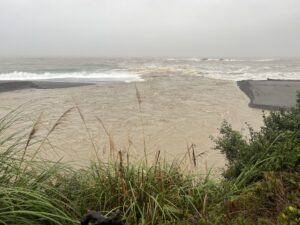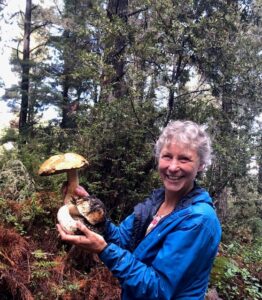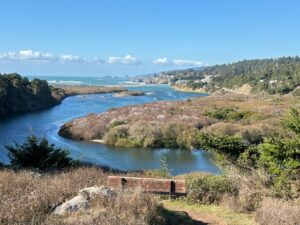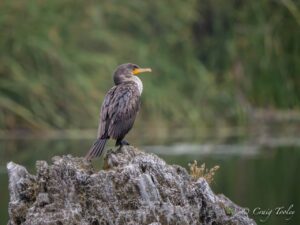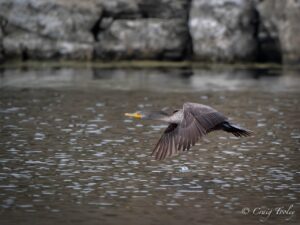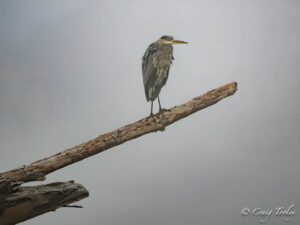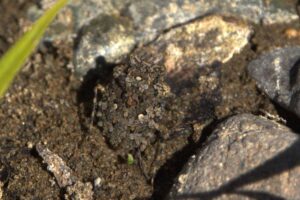It's no surprise the Gualala River would be flowing quickly into the Pacific Ocean. We've had a ton (almost) of rain this past week. Thursday morning found the mouth open and a very muddy river. Karen Wilkinson photographed the sight.
A big sandbar "closes" the river to the ocean when the spring rains are done. Any Steelhead in the river are trapped in luxury! When the autumn or winter rains have fallen, the lagoon fills up like a bathtub with a plug. The river floods into its floodplain. With enough rain, and perhaps help from the tides, the river bursts through the sandbar. The Steelhead will be propelled out to their next life phase, which is in the ocean. Steelhead waiting to return to the river to spawn can now do so.
Thanks to Karen for allowing me to share her photo with you here.
It rained pretty steady for most of today, Monday. Rain total since last Wednesday is a hefty 17.71 inches. Yikes!
